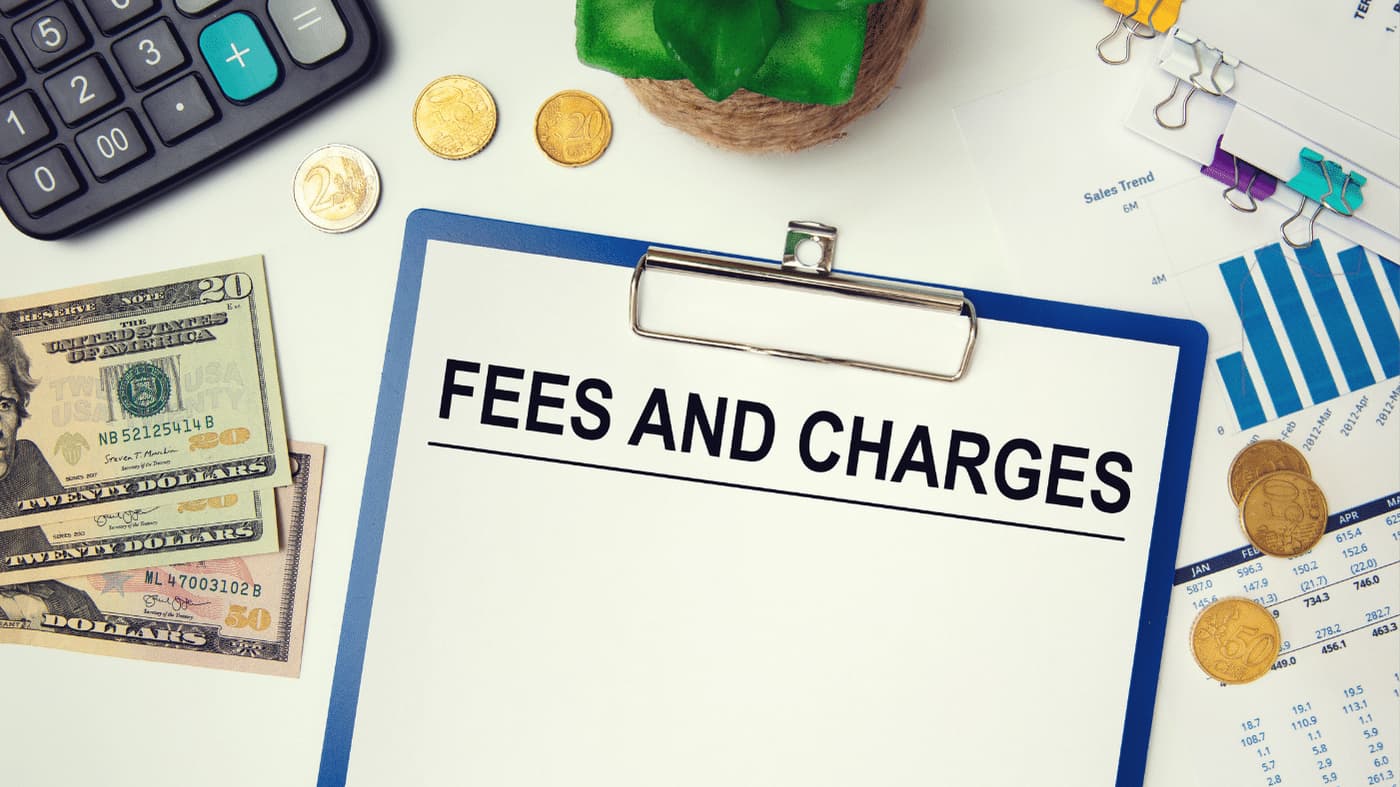Efficient inventory management now weighs heavier on the scale of Amazon seller fees, particularly with Amazon's new Low Inventory Level Fee. This fee applies if your inventory falls below a certain level, gauged by your sales history over recent months, and can affect your profit margins if you're not careful.
A clear understanding of this fee is crucial because it directly subtracts from your earnings. You'll incur an extra cost if your supply drops under 28 days based on past sales. Your goal? Maintain enough stock to dodge this fee without tipping into surplus and incurring additional storage costs.
Want to learn how to keep the perfect amount of stock and keep your costs down? Read on for helpful tips.
What Is Amazon's Low Inventory Fee?
Amazon has introduced a low-inventory-level fee to ensure that sellers maintain sufficient inventory levels and enable efficient distribution throughout Amazon's network. Its introduction in 2024 marks a significant change in how you manage your inventory on the platform.
Effective April 1, this fee encourages you to maintain inventory levels within a set range to avoid additional costs.
This fee encourages sellers to keep their inventory above a specified threshold, helping to speed up delivery to customers and reduce shipping costs.
The low-inventory-level fee is triggered when a product's historical days of supply dips below 28 days. This metric is assessed over two periods: short-term (last 30 days) and long-term (last 90 days). A fee is applied only if both periods are under the 28-day benchmark.
To determine the historical days of supply, Amazon calculates at the parent-product level. This calculation involves comparing the inventory levels against the actual historical sales of the product.
Here's how you can view and manage your inventory to avoid this fee:
-
Go to the FBA Inventory page within Seller Central.
-
Look for a column labeled "Historical days of supply".
-
Products that maintain 28 days or more of supply are exempt from this fee.
-
Use the information icon to understand the fee's calculation.
Amazon offers flexibility to sellers:
-
New Professional Sellers are exempt for the first year.
-
New-to-FBA Parent Products get an initial 180-day grace period.
-
Auto-replenished Products by Amazon aren't subject to this fee.
To minimize or avoid the fee:
-
Ship additional units to increase the short-term supply above 28 days.
-
Consider enrolling in Amazon Warehousing and Distribution for automatic replenishment, which also grants an exemption from the fee.
Updated Amazon FBA 2024 Low Inventory Fee (Full Policy Breakdown)
How To Calculate the New Low Inventory Fee
Calculating Amazon's new Low Inventory Fee involves understanding your inventory levels and the historical days of supply metric. Your attention to products' stock level and inventory management plays a crucial role in this process.
To begin, assess your historical days of supply. This metric considers both short-term (last 30 days) and long-term (last 90 days) inventory levels.
Amazon requires that this figure be above 28 days to avoid the fee. Here's what you need to review:
-
Short-term days of supply: The average supply you've had over the past 30 days.
-
Long-term days of supply: The average supply over the previous 90 days.
For effective inventory management, consider these key points:
-
If both short-term and long-term days of supply are below 28 days, you'll be subject to the low inventory level fee.
-
Keep your days of supply between 29-54 days to avoid this fee and simultaneously prevent overage charges.
Amazon's optimization strategy intends to encourage sellers to maintain optimal stock levels for prompt and cost-effective order fulfillment.
Fee Calculation Example:
-
Determine if the historical days of supply are less than 28 days for both periods.
-
If they are, check the fee tier that applies to your product type and quantity.
-
Use Amazon’s fee chart or fee calculator for a precise amount based on the shortfall in your inventory.
Strategies for Fee Reduction
To effectively reduce fees on Amazon, it's crucial for sellers to understand and employ strategies that mitigate the Low Inventory Fee, make the most of quantity discounts, and leverage the Inbound Placement Service Fee to their advantage.
Preventing Low Inventory Fee
Amazon's Low Inventory Fee is designed to encourage sellers to maintain sufficient inventory levels. To prevent this fee:
-
Regularly review your inventory levels using Amazon’s Inventory Health reports, ensuring you're above the minimum required stock.
-
Adjust your replenishment cycles based on sales velocity and seasonality to avoid dipping below the threshold.
Utilizing Quantity Discounts
Taking advantage of quantity discounts can reduce overall costs:
-
Purchase larger quantities from suppliers if it leads to a discount, balancing the savings against the risk of overstocking.
-
Consolidate shipments to Amazon's fulfillment centers to save on shipping costs, which can offset other FBA fees.
Inbound Placement Service Fee Advantages
Amazon’s Inbound Placement Service Fee relates to sending your products to FBA. To use it to your advantage:
-
Optimize shipment planning by choosing fulfillment centers closer to your primary customer base, reducing the fee and delivery times.
-
Be aware of fee changes effective March 1, 2024, and plan your shipments accordingly to avoid sudden increases in costs.
Also read: Amazon FBA Fees: How Much It Costs To Sell On Amazon and How to Easily Calculate Amazon FBA Fees in 2024
Conclusion
The Low Inventory Level Fee introduced by Amazon incentivizes sellers to maintain the right amount of stock to meet customer demand without incurring extra costs. Understanding and managing this fee is an integral part of selling on Amazon, impacting both your budgeting and inventory strategies.
Staying above the 28-day threshold of supply for both short-term and long-term periods requires diligent monitoring and timely action to keep your operations running smoothly and profitably.
Amazon sellers need to find the right amount of stock to have: not too little that you get charged a Low Inventory Level Fee, but not so much that you waste money on storage. By carefully planning and watching your past sales, you can dodge this fee and keep your business doing well on Amazon.
Frequently Asked Questions
Do I have to buy inventory for Amazon dropshipping?
No, you don't need to buy inventory for Amazon dropshipping. In dropshipping, you list products for sale and then purchase them from a third party who ships them directly to the customer. This means you don't handle the products directly or keep them in stock yourself.
How much should inventory cost?
The cost of inventory varies widely depending on the product. It should be low enough to be profitable after accounting for Amazon fees, shipping costs, and any other expenses. Conduct market research and cost analysis to determine a competitive yet profitable pricing strategy for your inventory.
How much is the FBA removal fee?
The FBA removal fee varies based on the size and weight of the item being removed from Amazon's warehouse. The fee generally starts at $0.50 per item for standard size items and increases for oversized items. Check the latest FBA removal order fee structure on Amazon's official fee schedule for accurate costs.
Does FBA require pallets?
For FBA, pallets are required only when you're sending large shipments to Amazon's fulfillment centers that are palletized for easier handling and storage. For smaller shipments or individual products, palletizing is not required.
Why does Amazon charge so much for FBA?
Amazon's FBA fees reflect the comprehensive service they provide, including storage of your products in their fulfillment centers, packing, shipping, customer service, and handling returns. The cost also covers Amazon's extensive logistics network that offers fast and reliable shipping.
Does Amazon take a cut of what you sell?
Yes, Amazon takes a cut of each sale made on its platform. This comes in the form of various fees, such as referral fees, which are a percentage of each sale, and FBA fees if you use Amazon's fulfillment services. These fees vary depending on the product category and the services you use.



 Scale Insights Team
Scale Insights Team



